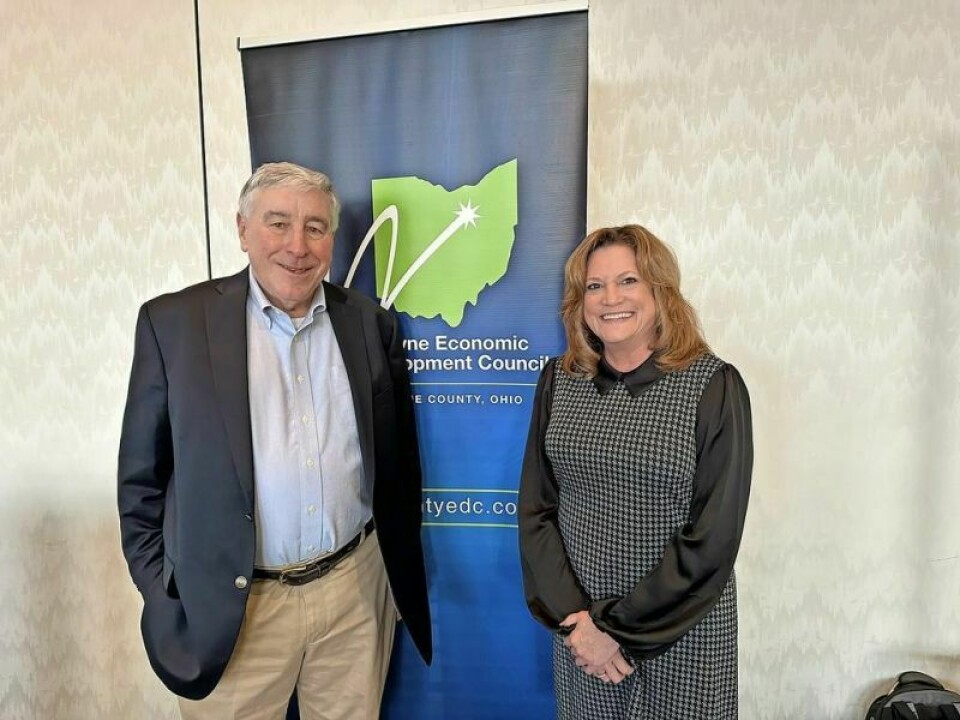Overall economic outlook in Wayne County is positive

With a diverse economy and a low unemployment rate, Wayne County has an overall positive economic outlook as it heads into 2024.
Related to the economic outlook and labor market, there are some key trends to pay attention to in the upcoming year.
“What happened to the recession?” said Ned Hill, an Ohio State University professor of economic development, when speaking to an audience during a presentation that took place in February, hosted by the Wayne Economic Development Council as part of its Briefings for Business series.
Much of 2023, the business community watched as headlines predicted a recession. Is that still a risk for 2024?
“We threaded the needle and had a soft landing. We have consensus that we avoided the recession,” Hill said.
Hill is alluding to the phenomenon that when the Federal Reserve raises interest rates to curb inflation, the U.S. then faces a risk of higher unemployment and even recession. Threading the needle means the high interest rates successfully are lowering inflation while avoiding a recession.
“That's one of the most amazing public policy pieces I have seen in my 40-year career,” Hill said.
The annual growth rate in Real GDP for the U.S. in quarter four of 2023 was 2.9%, and for Ohio it was 2.0%, which reflects an acceleration from previous quarters in 2023.
The unemployment rate of 3.7% in January 2024 — about the same rate nationally and for Ohio — may be cause for concern.
“We used to be taught in grad school that full employment is 5% — 3.7% is too low. When labor markets are that tight, it pushes up wages, and it can restart inflation,” Hill said.
Another concern with tight labor markets is the connection they have to the ongoing labor shortage that has been covered extensively, both nationally and in Northeast Ohio.
Maribeth Burns, president at Wayne Economic Development Council, continues to hear from businesses about struggles to fill vacant positions. As such, she’s following the data on labor markets closely to identify ways WEDC can support businesses through workforce marketing.
Hill shared national data on the labor force participation rates since the COVID-19 shock, across various categories: age group, gender and more. Unlike the unemployment rate, which shows individuals actively looking for work, the labor force participation rate includes those able to work but not looking for work. This metric is important because it could help in identifying opportunities to fill vacancies. But it’s not going to be easy, according to Hill.
“As employers you will continue to have a hard time recruiting people. You will have to find new pools to tap into, and HR will need to find new ways to coach, retain and turn them into a productive worker,” Hill said. “A year ago the focus was on women, women staying home to care for kids.”
Hill said women have largely rebounded to their prepandemic levels of workforce participation.
Nationally, the biggest category that has not rebounded is men. Specifically, the high school graduate male without a trade has seen the worst labor force participation. The over 55 category has the biggest decrease in labor force participation.
However, in Northeast Ohio, “The Fund for our Economic Future’s data showed that we saw the drop in the 18-34 age range,” Burns said.
It’s important to highlight these differences in the national versus local trends.
Other 2024 trends to follow
Rising health insurance costs is something to keep watching as many big healthcare insurance contracts are up for renewal and there are fears these will increase another 5%, according to Hill.
While women have increased their labor force participation since 2020, Hill said, “We do need to figure out child care and family responsibilities.”
Hill also recommends paying attention to immigration policy as this has a direct impact on the available labor pool.
“Ohio is losing its working-age population,” Hill said. “A national immigration policy that responds to labor market demands and a policy that allows international students in Ohio’s higher educational and vocational institutions to become citizens is a way to rebuild and reload our economy.”
In Wayne County housing continues to be a hot topic. A concern voiced in the housing assessment study being led by WEDC, according to Burns, “is over the percentage of family income that's going toward rent or mortgage expenses. It's taking up a greater percentage of household income, and people are taking on more debt as a result,” she said.
Looking forward
Overall, Burns is optimistic. “2024 is starting out strong for our Wayne County businesses. We're hearing good things about future capital investment and upcoming expansion projects,” she said.
Still, policy reform may be needed to continue to support a thriving economy in Ohio. Hill believes there are a few mismatches where statewide policies are not aligned with a longer-term view of the health and competitiveness of the state’s regional economies.
Even with the good news of currently having avoided a recession, it’s important to look forward with caution, Hill said.
“The economy is running so close to full throttle and the labor market is so tough that how do we as a nation prepare the economy for the future?” Hill said.
























